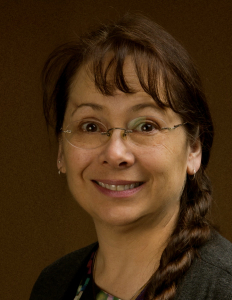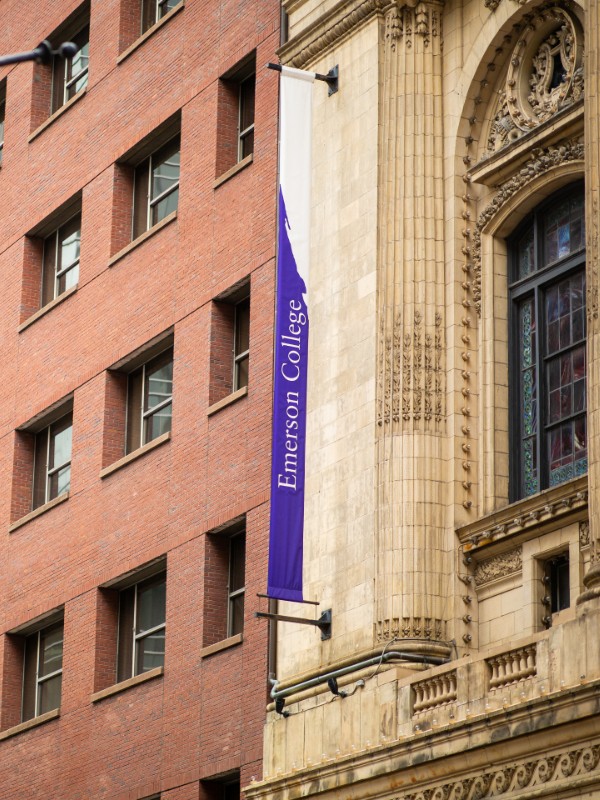Interview With Dr. Elizabeth Hanson of the University of South Dakota

Elizabeth K. Hanson, Ph.D., CCC-SLP is an associate professor in the Department of Communication Disorders at the University of South Dakota where she teaches graduate courses in Augmentative and Alternative Communication, Motor Speech Disorders, Research Methods, and Advanced Communication Science; and supervises clinical practica in the area of Augmentative and Alternative Communication (AAC). Her research focuses on AAC strategies for people who wish to combine AAC with natural speech and on telecommunication for people who use speech-generating devices. Dr. Hanson earned her Ph.D. from the University of Nebraska –Lincoln, and her M.S. from the University of Wisconsin – Madison. She practiced as an augmentative communication specialist at the Communication Development Program and Communication Aids and Systems Clinic in the TRACE Center, an AAC/AT clinic in Madison, Wisconsin.
Note: You should consult with your doctor or speech pathologist for recommendations on treatment. The views and opinions expressed in this article are those of Dr. Hanson and do not necessarily reflect the official policy or position of SpeechPathologyMastersPrograms.com
How did you become interested in researching augmentative and alternative communication?
As a career-changing, non-traditional student at UW-Madison I completed informational interviews with a number of speech-language-pathologists who had also changed careers to speech-language pathology (SLP) in the past. (I worked in TV news as a weather person, reporter, and producer before going back to school for SLP.) One of the people (Julie Gamradt, M.S., CCC-SLP) I interviewed to learn more about the field was director of an AAC clinic that employed SLPs and OTs who worked exclusively with clients with AAC and assistive technology needs. After I decided to make the leap to go back to school for SLP, that director offered me a student-hourly position in the clinic. It was there that I learned the nuts-and-bolts of AAC; I mastered Boardmaker, created countless communication books, displays, and visual schedules, and learned to program speech-generating devices (SGDs), such as the Macaw, early DynaVox and DynaMyte, and other technologies such as IntelliKeys. It was a great job!
When I took the AAC course in my Master’s program, it all clicked. I could relate all the technical skills I had mastered in my part time student job to the populations with different diagnoses and the underlying evidence in AAC. The professor for the AAC course (Jon Miller, Ph.D.) hired me as a TA for the AAC class in the following year. Through that job I got to prepare and teach labs, which provided more advanced technical skills and an introduction to teaching – which I loved!
I applied for an SLP position at the AAC/AT clinic where I had been working as a student during my last year of grad school and that’s where I completed my clinical fellowship year and continued working as an AAC specialist clinician for about 4 years. I loved the clinical side of things but I was frustrated with the lack of evidence in the AAC field to back up some of the interventions that we were using so effectively. I tried to launch some research projects but the productivity demands of my clinical position made it very hard to follow through. An advanced degree (i.e., Ph.D.) was always a tantalizing potential and completing my M.S. and working clinically for a few years gave me the confidence to apply to the doctoral program at the University of Nebraska – Lincoln where I could learn from David Beukelman, co-author of the primary AAC textbook in the field. That was the right decision and place for me. Dr. Beukelman made sure all of his graduate students were involved in some aspect of research from Day One, so I got experience working on a wide variety of research projects with many different researchers there. THAT experience really hooked me. I learned how to do the research that I was so desperate to find as a clinician. That’s how I became interested in doing research in AAC.
What are some of the most important things we have learned about AAC and patients in need of AAC in the last couple of decades?
There are so many things, but I’ll list three that first come to mind:
- AAC principles and strategies are just good clinical practice. Visual supports, which is a modality of AAC, is useful for all clients. We should be providing pictures, outlines, written instructions, etc., along with our spoken interactions for all clients – not just those who need AAC.
- AAC myths are persistent and hard to destroy. For example, people (even some SLPs!) still fear that a child won’t develop speech or an adult won’t recover speech if AAC is an option. It’s just not true but the idea keeps coming up.
- Another myth, the prerequisite myth, keeps coming up as well. I recently heard about a school team that wanted a young student to learn to “look up” first before they would recommend an eye tracking system! We have to be vigilant and keep educating other professionals so they understand that AAC skills are best learned by learning to communicate via AAC, not by focusing on decontextualized activities or behaviors.
What are some current challenges to getting people the AAC tools that they need?
Attitude, practice, policy, and funding barriers still hinder acquiring AAC. Getting communication partners to accept, support, and use AAC modes of communication is always challenging. We need to keep educating families and professionals about the importance of using the communication modality we expect the client/student to use, to provide ample wait time for communication, and to support AAC by creating communication opportunities.
How has easy access to AAC through tablets and smartphones affected the role of the speech-language pathologist?
Tablet technology has been a game-changer for AAC. The good news is that the ubiquity of tablets and smartphones has made the idea of high-tech AAC (specifically speech-generating devices) more acceptable to clients and other team members. The bad news is that sometimes clients end up with an inappropriate system when a well-meaning friend or relative buys a tablet and app before an appropriate evaluation and recommendations are made. It becomes tricky for the SLP to support and encourage those well-meaning individuals and at the same time advocate for a more appropriate system. I always try to implement whatever the client comes in with. It may be that the system is in line with what I would have recommended. If not, then I can document the deficits of the system and complete an evaluation to make more appropriate recommendations. I never want to alienate a team member or communication partner. I want to communicate validation and appreciation of their help while also making sure the client gets the appropriate AAC system.
How do you choose new research projects to take on?
I’ve been doing this for a while so I have a few established research lines in AAC. I try to develop research projects that advance those existing lines of research as that is where I feel I can make the most impactful contribution to the field; building on areas in which I have expertise to deepen and expand our understanding in those areas. That’s not to say I won’t consider a new and different research idea, and I certainly serve on committees for a variety of student research projects. But with limited time to devote to research I have to budget my research time strategically.
What aspect of your research are you most proud of?
I like AAC research, in general, because it is usually very practical and applied. I certainly understand and appreciate the need for basic research in our field, but I find I am more inspired by research results that can be useful to practicing professionals. That said I am most proud of the fact that my research has been used by others to develop elements of AAC systems such as an alphabet/topic supplementation app and pre-programmed vocabulary for telephone calls that is programmed into AAC software.
Do you have any advice for those considering a career in speech pathology?
Do it! But do your research first. Read about the field and meet and talk to as many speech-language pathologists as you can. Arrange to job shadow a variety of SLPs to get an idea of the great variety of work settings and tasks in the field. Investigate the academic requirements in advance so you know what you’re getting into (e.g., to work as an SLP one needs to have a Master’s degree and there are certification and licensure requirements). Finally, be open to different areas of practice as an SLP. I often have incoming students who are sure they only want to work with children or in schools or with adults or in medicine or in rehab, etc… only to have them experience a setting they thought they wouldn’t like and learn that, in fact, they do like it. It is such a versatile profession with a variety of work settings and a huge need for expertise.
Sponsored online speech pathology programs

Online MS: Pursue SLP Certification. Study FT/PT
Speech@Emerson enables you to earn an MS online and pursue SLP certification in as few as 20 mos. Learn the same curriculum as the on-campus program. Study FT or PT.
- Prepares you to pursue certification as an SLP generalist
- In-person clinical placements at faculty-approved partner sites
- As few as 20 months to complete
SPONSORED

Want to Become an SLP? Earn an MS Online at NYU
NYU Steinhardt’s online master of science program in Communicative Sciences and Disorders prepares aspiring speech-language pathologists with a comprehensive professional education.
- Prepares students to pursue SLP licensure
- Accredited by ASHA’s Council on Academic Accreditation
- As few as six terms to complete
- Full-time and part-time plans of study
SPONSORED

Online MS in Speech-Language Pathology from Pepperdine University
Pepperdine University’s online Master of Science in Speech-Language Pathology program combines a robust, innovative curriculum rooted in Christian values with a full-time or part-time option that features online learning, on-campus intensive experiences, and comprehensive clinical field practicums to prepare skilled, compassionate students for careers as speech-language pathologists.
- Full-time (five trimesters) or part-time (eight trimesters) options available.
- No GRE scores required.
- 400+ supervised, clinical learning hours are done at schools/clinics local to students
- Three onsite experiences build a sense of camaraderie and community throughout the program
SPONSORED

